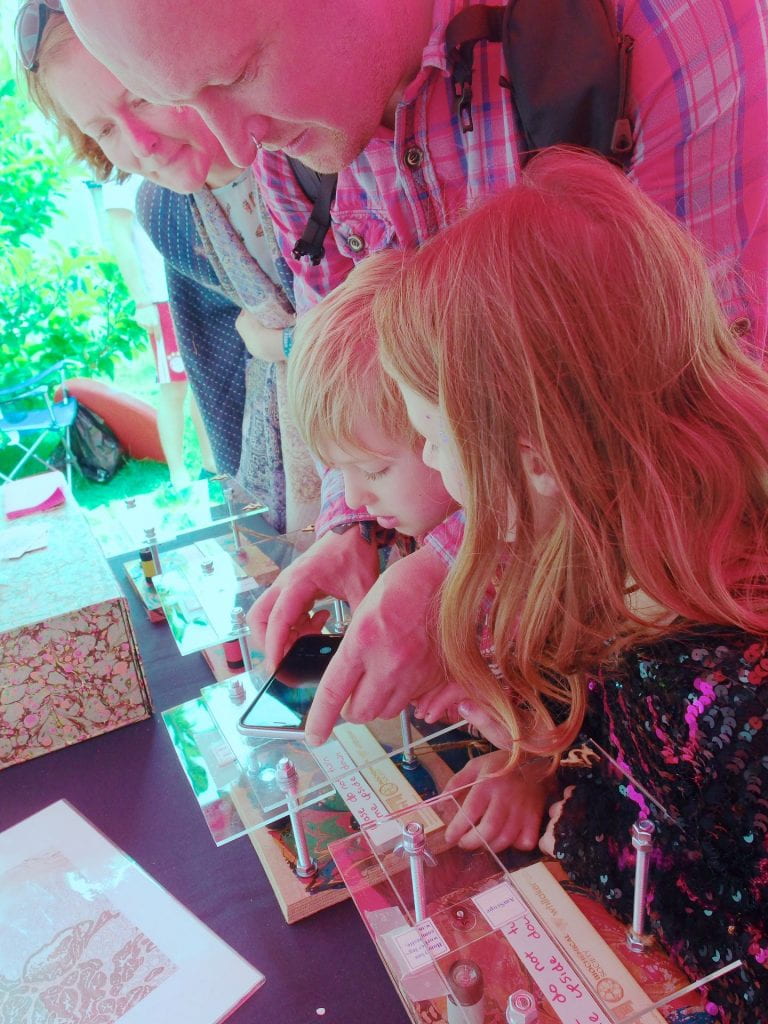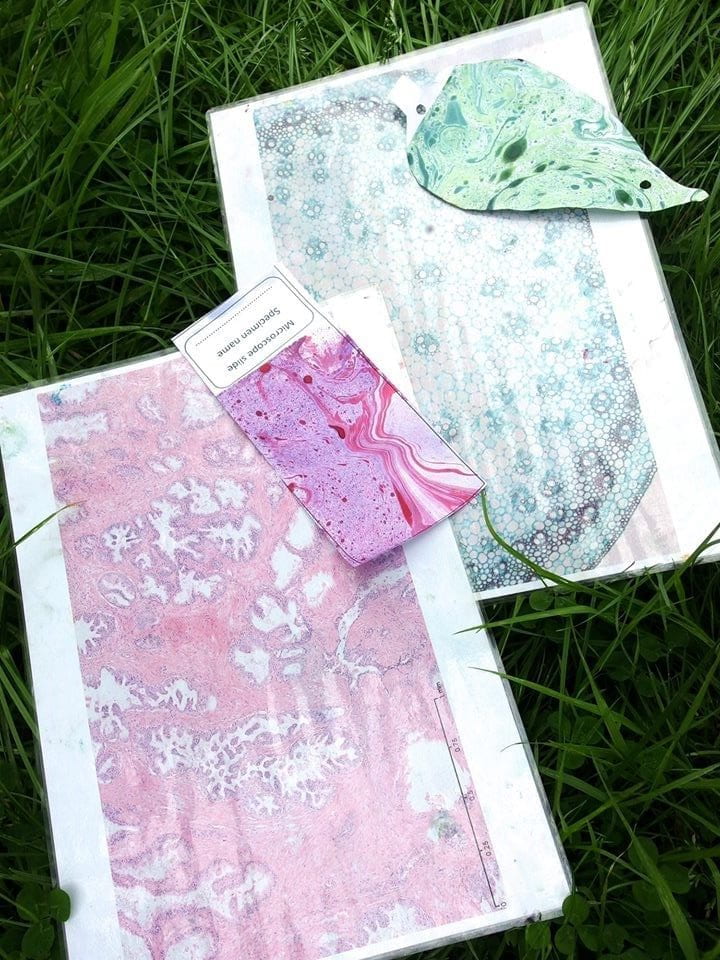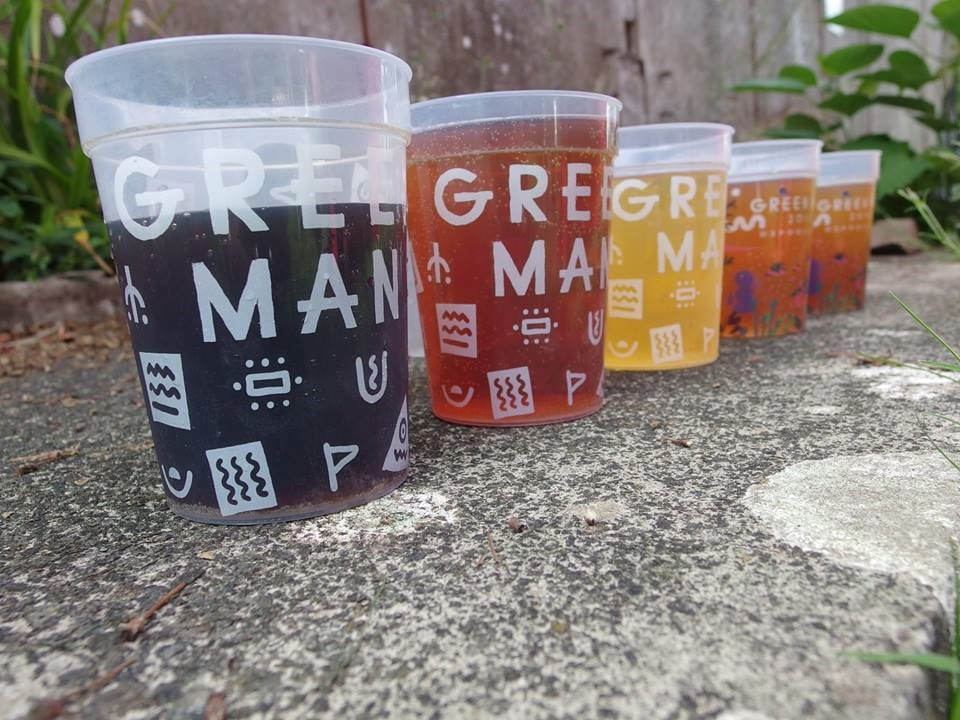Science in the shrubbery
By Briony Fleming, on 28 May 2019
This post has been written by Dr.Hayley Pye who is a Research Associate in the Centre for Molecular Innovation.
Last august; thinking ourselves well organised and ready to ‘communicate some science’, a group of friends and colleagues took ourselves off to Einstein’s Garden. Einstein’s garden is full of scientists and science stalls – all hidden between bushes and beneath trees. It is part of a four day music festival called Green Man, set beneath a misty mountain in the beautiful Brecon Beacons. This blog will hopefully be of help to anyone who wants to do something like this themselves – something I would strongly encourage you all to do.
Lesson one – you are not as well organised as you think!
…and you will forget things! Just one of the many, many things we forgot or only realised we needed once we were there… was kitchen roll. We needed something for cleaning up one of our activities, luckily a few of us – having had previous music festival experience– knew to bring copious amounts of baby wipes. These were a brilliant replacement and we still had enough spare to have ‘baby wipe showers’ when needed. In contrast however, one of the team had never been to a music festival before and this leads to my first piece of advice… make sure everyone has had ’preparations in their expectations’. The portaloos were perhaps something I should have mentioned, but all credit to her, she quickly threw herself into the spirit of things and never complained. Also credit to Green Man (or perhaps the festival goers) as it is the best festival I have been to for a high quality portaloo experience! Going a little off track… so back to lesson one; throughout the first day be prepared to adapt all of your activities for the reality of the environment (and the crowd). Three of us had done Einstein’s garden before (more than once) so felt like we had a good idea about what would work, but we had never run this particular activity before and, despite a practice and loads of prep, the realities of how it worked best only became apparent when we were there doing it for real. The first day the public are allowed on site is quite slow – people trickle in – and this is perfect – allowing you to adapt and come up with better ways to run the stall and activities. To allow this to go smoothly make sure you have a toolbox of spare bits and bobs to help, for example a small tool kit, big bits of paper, colourful pens, string, a cargo net, cable ties – always bring cable ties! Cable ties are almost as important as babywipes.
Lesson two – people like to touch things.
The activity we had to adapt the most on this first day was our microscope activity. In Einstein’s garden you have no mains electricity – you can generate it yourself or you can go without. We made some fabulous portable mobile phone to microscope convertors using this tutorial; https://www.instructables.com/id/10-Smartphone-to-digital-microscope-conversion/, we then adapted some for 100X magnification using 3.0mm diameter, sapphire ball lens (#43-644) from Edmonton optics based on work by https://availabletechnologies.pnnl.gov/technology.asp?id=393.
We wanted members of the public to understand what things look like under the microscope and so various bit of stained tissue were put under these microscopes for the public to take pictures of with their own phones. To help with understanding scale, some had parts of insects – much more immediately recognisable than say…a piece of oesophagus! The original plan was to have one of these microscopes on hand to show people how it worked before sending the public off to find the other 5 microscopes with matched laminated information sheets that we had hidden in the grass all around the stall area. The microscopes are very robust but have one key weakness… if you turn them upside down or drop them from a height the tiny 3mm lens can bounce out – and in a Welsh field it will disappear forever into the long grass – which they subsequently did. We had predicted this to some extent and marked up the microscopes with… ‘PLEASE DO NOT TURN ME UPSIDE DOWN’… we also had two spare lenses as back up. Despite this – our expectations were exceeded and less than one hour into the first day we went out to inspect the microscopes and had lost 3 out of 5 lenses. I had had been watching people using them from afar and no one was being excessively rough, but both adults and kids couldn’t help picking them up and handling them, passing them around, especially when they were excited about what they were doing. Shortly after this first inspection – we fixed them up and moved them onto a table inside the stall for people to use in a ‘more controlled environment’. This also worked well for the engagement as we could cover the science in more detail but it was more labour intensive for us and perhaps less exciting than a treasure hunt. Since back at UCL our microscopes have now been adapted with a cover glass to keep the lens safe – perhaps they could now survive out in the Welsh wilderness.
Lesson three; experiment with your activity in your living room first.
Our main activity involved paper marbling, the patterns you obtain with this technique can look remarkably similar to the histological staining of cells when viewed down the microscope. We wanted people to create their own images of human tissue or plant cells on pieces of paper while we talk to them about how we use microscope images of tissue to diagnosis disease. It would have been a disaster for the stall if the marble kits had not worked properly i.e. if they had not created the type of images we were after, not dried quick enough or not washed off the trays (or worse, not washed off the people). Another consideration was the dyes not being environmentally friendly – something which is central to the ethos of Green Man and would prevent us disposing the water waste into the environmental waste streams. So before we left London we set-up pilot experiments buying marbling kits from different companies and trying out different staining techniques and paper types to get the images just right. We discovered that only one of the four kits we tried was suitable:https://www.brianclegg.co.uk/education/toys/ink/marbling-ink/marbling-ink-assorted-standard-colours-6x25ml-bottles.
One of the kits we rejected because it needed white spirit to remove it from your hands (and turns out…my carpet), however the images were very bright so we used it on stall decorations prepared before we left (in the garden this time). Another was too weak and didn’t create the effect we needed, and the final kit failed because it required a much more complicated technique where you had to add oil to the mixture, making it too intensive both to teach and to clean. Another thing we ‘discovered’ in our experimenting was that it was possible to squeeze the dye bottles in such a way that the lids exploded off and the dye went everywhere – resulting in yet more carpet cleaning, but also an idea to use empty vape bottles as small decanters to avoid spills and allow us to stretch valuable resources by restricting the amount of dye used.
Lesson four; ‘kids’ activities are not just for kids.
Initially we had thought the marbling activity would just be for younger visitors to the stall but it was surprisingly effective for everyone who visited. Stall visitors of all ages created some beautiful and effective marbling artworks with ease. We even heard a whisper that some of our ‘artwork’ made it backstage of the main stage. Although Einstein’s garden attracts a lot of young children, the audience at Green man spans people of all ages, which can make it hard to plan activities suitable for all. The marbling activity was surprisingly effective in this way.
The elements to this activity that we think made it particularly adaptable to all ages were; It was a simple and quick and did not require much instruction. This was key for children and adults alike, as they could quickly grasp, complete and repeat independently leaving plenty of room for the discussion of the science while groups of people work. The discussion could then be adapted for the particular interest and level of understanding of the people around the table. Once trained, the independent aspect of the activity also meant it suited people who prefer to interact at their own pace as well as people who wanted more attention and discussions. The creativity and ease of the activity was also key – impressive patterns could be made easily with little more than random water movement, but those with the disposition could spend longer designing a more created art work picking colours and patterns more consciously. Adults of all ages could be initially resistant to engage in a ‘kids’ activity but having a lot of the artwork on display really helped as it made them curious, and connecting it more to the scientific images on display kept them interested when at the table. It also has to be noted that during quiet periods even the stall staff could be found creating all sorts of marbled masterpieces. That or catching a quick nap…
Lesson five; pick an activity you will enjoy – even with lack of sleep.
Plan an activity that does not always need 1:1 staff to visitor interaction, or that can be scaled up or down. This helps when the stall gets busy and toward the ends of the day when you can slowly scale things down to help with packing up. Green man is really hard work so it is important your team enjoy communicating the activity and that you have the ability to be flexible to allow people to go off and have breaks when they naturally want or need them. There is a lot of unpredictability with the crowd, and it can be time of day, weather and line up dependent. You will get waves of interest and it can go from 1-2 people to 20 within minutes. Try and plan your activity so that it is not too monotonous for the staff – if they are happy at the stall they will want to spend their time there and be part of its success, and you wont be negotiating breaks all day. The stalls are not open during the evening so you never miss headliners but there is also plenty to experience in the day. There is one thing I do advise you do ‘schedule’ more officially however, and this is picking just one or two people to be responsible for opening up every morning, rotating the responsibility, even if this means scaling down the stall for the first hour each day. This allows people to stay out late / sleep in at least one morning if they need to. Despite this scheduling – we found within the first few hours almost everyone had normally found their way to the stall anyway – often with some delicious but strong welsh coffees balanced on a little cardboard tray. One particular morning I think a well timed appearance of someone with a ‘spare’ cheese toastie may just have saved my life. So yes – be prepared – the work is hard and sleep is lacking (festivals are loud).
Lesson six; mix it up for your staff.
Another thing worth sharing that worked well was the different ‘jobs’ on our stall which ranged in their intensity and level of interaction / difficulty. E.g. From doing the ‘washing up’ of the marbling materials behind the tent; cutting out paper materials; sitting down explaining science; being up front explaining the stall; or encouraging people in who were lingering around the tent. Day one, everyone was taught all the roles and throughout the festival people would naturally move around these jobs depending on what needed doing, their natural preferences and how they felt at that point in the day. But the most important job of all was also the final job of the day. After we had finished moving everything onto a table and covering it so it would not be affected by the morning dew – the person who was ‘washer up ‘ had to empty the wash up bucket and re-fill it with cold water so we could fish out cold beers from the bucket and all have a well deserved sit down behind the tent!
Lesson seven; like any good science project – keep your aims in mind and measure something.
Write some aims before you start and keep these in mind as you plan everything. There was definitely a lot of benefit in our flexible and adaptable activity (see above) but it meant a lot of the linking to science was done verbally. It was very easy to lose this when the stall was really busy. Next time, I will make sure some our key aims are more clear, having them more visibly on display or perhaps available to take away. Another problem was that when it was busy it was very hard to get people to fill out additional questionnaires or quizzes in order to get some measurable outcome data from the activity. For us, the only thing that worked really well was when we embedded outcome data directly into the activity itself, i.e. asking people to complete an activity which leaves something behind at the stall, something where people can see the visible effect of their interaction and/or something that will visibly change over time. We combined these ideas into our marbling activity; people got to marble both a microscope slide and a leaf shape, they could add their name to the slide and take it away but they were asked to add their leaf to a giant green man’s face we hung in a tree. His bead grew throughout the festival as more and more leaves were added, we could count these leaves at the end of the festival as an indication as to how many people engaged in this activity. This, alongside some qualitive photographs taken throughout the weekend of stall activity, meant we could estimate how many people in total likely visited the stall over the whole weekend (about 500). The artwork created also looked very impressive on display and was a great way to entice people into the stall.
Thank you to my wonderful stall team, Einstein’s garden and Green Man festival. Also to the Biochemical society for funding us because since Green Man Festival both parts of our stall have been used internally and externally 6 times by the Division or myself. It has been so successful our Communications, Marketing and Events Manager at UCL has secured funding to make 10 more microscopes. Please get in touch if you want more tips or information on how to make and/or use any of the activities we developed (h.pye@ucl.ac.uk). If I have inspired anyone to get involved applications to Einstein’s Garden at Green Man open around March / April every year https://www.greenman.net/information/get-involved/. Good luck to anyone who applied and don’t forget the cable ties!
 Close
Close









